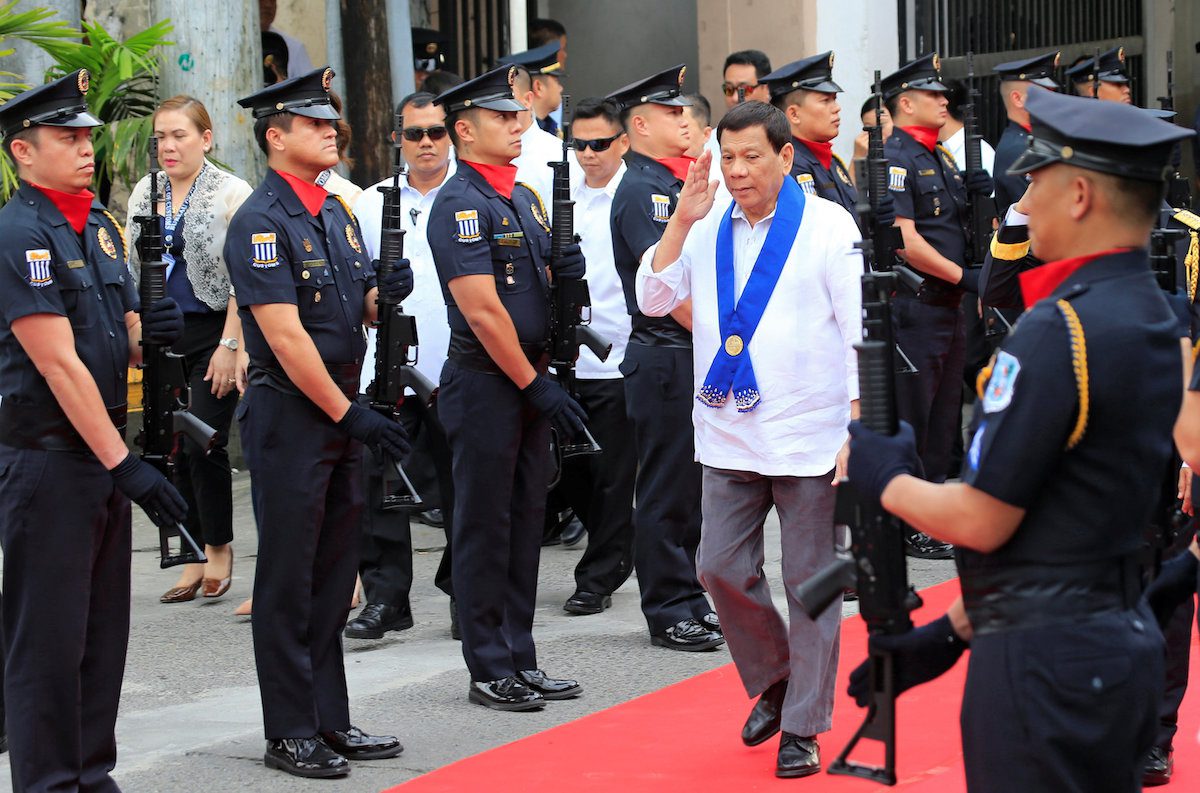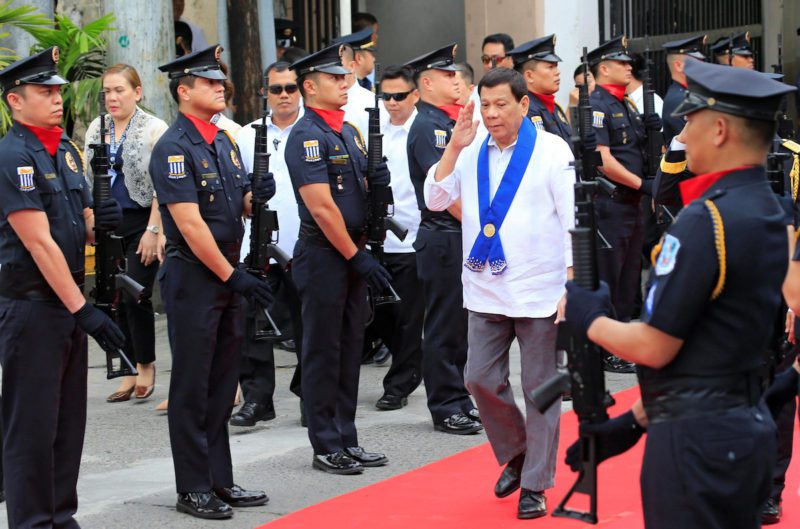Hung Cao – A Navy Diver In The Pentagon Briefing Room
Hung Cao and the Fight to Rebuild America’s Maritime Power Before the Next War Arrives by Captain John Konrad (gCaptain) The first thing you notice about the US Navy’s Undersecretary...

By Admiral James Stavridis, USN, retired (Bloomberg)

The first time I sailed into Manila Bay, I was a young ensign on a Navy destroyer. It was in the late 1970s. I felt I was part of an unbroken line of U.S. sailors going back to 1898, when Admiral George Dewey destroyed the Spanish fleet in that natural harbor at the start of the Spanish-American War.
The U.S. took the place of Spain as a colonizing power, and the Filipinos fought a long insurgent struggle for independence until World War II. After the war, thankfully, the U.S. granted independence, but the two nations have maintained very close political, military and person-to-person ties.
Now, thanks to the country’s brash president, Rodrigo Duterte, that alliance is facing its toughest test in decades. The U.S. needs to act quickly or face letting the Philippines drift closer to China. That would be bad for America and worse for the Filipinos.
It’s hard to overstate the closeness of the U.S.-Philippines relationship. There have been waves of immigration to the U.S. — some 4 million Filipino-Americans today make up the second-largest Asian ethnic group in the country. The U.S. Navy in particular has had a huge number of sailors who are descended from those islands, including my close friend Vic Mercado, a retired admiral now in a top civilian job at the Pentagon.
For decades, U.S. ships and aircraft have pulled into the Philippines – Naval Base Subic Bay and nearby Clark Air Force Base were at one point the American military’s largest foreign installations. (Both were turned over to the Filipino government in the early 1990s.) And perhaps most important, the U.S.-Philippines Mutual Defense Treaty, signed in 1951, stipulates that either nation will respond militarily in the event of an attack on the other.
Relations have not always run smoothly, but the military-to-military plank of the alliance has always been strong. Even during the erratic presidency of Duterte — who vacillates among the U.S., China and Russia, trying to play one against the other for concessions — military operations have continued. U.S. Special Forces trainers have been deeply involved with their Filipino counterparts, working against al-Qaeda and other terrorist groups waging a vicious insurgency in the southern part of the archipelago.
The U.S. provided a half-billion dollars in security assistance from 2016 to 2019. So it was shocking when the Philippines notified the U.S. this month that it intended to withdraw from the Visiting Forces Agreement, which since 1999 has allowed the presence of American troops. U.S. officials were surprised and dismayed; Secretary of Defense Mark Esper put it very mildly when he called it a “move in the wrong direction.”
It appears that the decision would immediately stop U.S. forces from operating with their Filipino counterparts, canceling nearly 300 annual training exercises on land and sea. Many observers think it is Duterte’s retaliation for U.S. criticism of his harsh campaign against drug dealers, which permits the police to apply deadly force liberally and extra-judicially. While many in the Philippine Senate want to reverse the decision to withdraw from the agreement — there is a 180-day “cooling off” period before it would take full effect — Duterte appears determined to diminish what he sees as unwarranted American influence in his country.
Assuming this breakdown in relations goes forward, what will be the effect on American strategy in the region? In blunt terms, how important are the Philippines to the U.S.?
The short answer is that the Philippines, an archipelago of over 7,000 islands, is critically important to American security and geopolitical influence. First and most immutably is the geography: The Philippines are essentially the “backboard” of the eastern part of the South China Sea, which carries 35% of the world’s maritime trade and sits over billions of barrels of oil and trillions of cubic feet of natural gas. China asserts sovereignty over the entire sea, and has pushed its claims in recent years through economic pressure, military expansion (including building artificial islands as bases), the sinking of its neighbors’ fishing boats, and other provocations.
Add to this both the deep generational connections between the U.S. and the Philippines and the significant military-to-military ties, and you can see how fundamental the visiting-forces agreement is to security and diplomacy for both nations. For the Philippines to walk away from staunch U.S. help against the terrorist-led insurgency in the southern islands would be a significant mistake.
Washington needs to do all it can to keep the communications open at the highest political and military levels, and yet not get dragged into Philippine domestic politics. The backup plan, if Duterte follows through on his threat, should be to craft a sort of “visiting forces agreement lite” acceptable on both sides; point out to the Filipino people that drawing closer to China over time will lead to a relationship favoring Beijing that the U.S. will not be able to undo; and rely on the deep cultural and historical ties.
Relations between the U.S. and the Philippines have always been fraught, but this is the biggest crisis since the fall of the dictator Ferdinand Marcos in 1986. Washington should not allow Duterte to push his people into the arms of China, which can use proximity and a perceived lack of U.S. engagement in ways that America’s friends in the Philippines, and across the entire South China Sea, will come to regret in the decades ahead.

Sign up for gCaptain’s newsletter and never miss an update

Subscribe to gCaptain Daily and stay informed with the latest global maritime and offshore news
Essential news coupled with the finest maritime content sourced from across the globe.
Sign Up